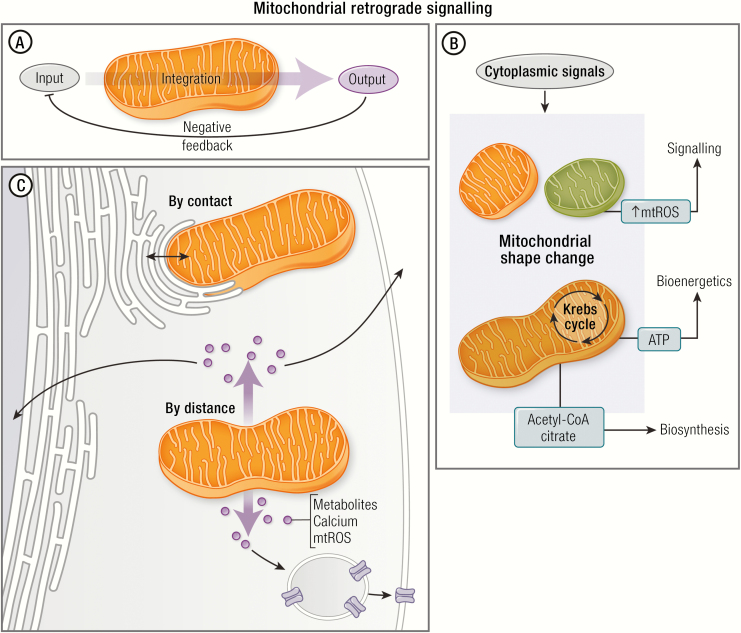Figure 2.
Mitochondrial retrograde signaling. (A) Mitochondria can be considered as an integration node. This organelle receives signals from the cytoplasm (Input), integrates the information, and generates responses (output). This response may regulate several cellular functions, generating a negative feedback on the input. (B) Cytoplasmic signals induce morphological and functional changes in mitochondria that regulate several intracellular functions such as signaling (eg, mROS generation), bioenergetics (ATP synthesis), and biosynthetic (eg, acetyl-CoA) roles. These roles are necessary for the whole cell function. (C) There are 2 mechanisms by which mitochondria regulate whole cell function: (1) by contact (eg, ER–mitochondria interaction), and (2) by distance (eg, mROS activate transcription factors to modulate nuclear gene expression). Communication by distance would include several molecules, such as small metabolites, peptides, and ions. These molecules would regulate nuclear gene expression, vesicle trafficking, and cell death, among others.

